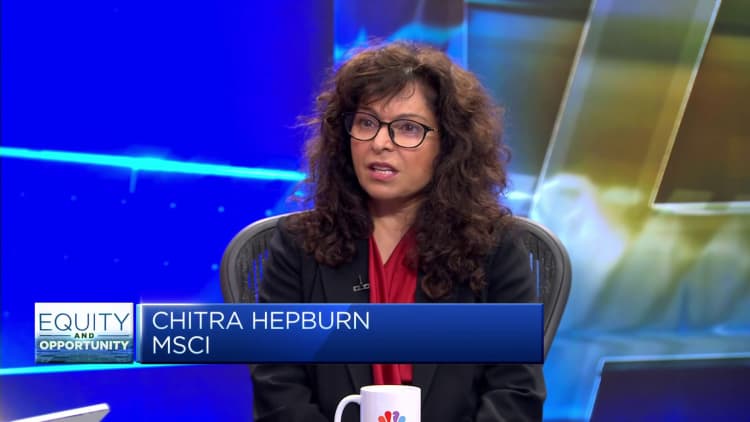
Equal Pay Day is a reminder of the persistent income inequality between men and women.
As it stands, women earn just 84 cents for every dollar earned by men, according to an analysis of U.S. Census Bureau data by the National Women’s Law Center.
“When you look at the cent number, it looks like it’s small,” Jasmine Tucker, the National Women’s Law Center’s vice president of research, said of the shortfall. “I don’t think that does justice to the actual losses.”
This year, March 12 marks just how far into the new year full-time female workers have to keep working to make what their male counterparts typically made in just the previous year, also known as the gender pay gap.
Over time, the inequality is magnified. Based on today’s wage gap, a woman just starting out will lose $399,600 over a 40-year career, according to the National Women’s Law Center.
The pay gap worsens significantly for Black and Latina women.
For Black women, the lifetime wage gap adds up to $884,800, and for Latina women, the losses total $1,218,000, the nonprofit advocacy group found.
That also means that Black and Latina women would have to work full time, year-round to nearly age 80 or 90 to make what white non-Hispanic men are paid by age 60, Tucker said, “or they forfeit over $1 million in losses.”
Why the gender pay gap persists
There is no single explanation for why progress toward narrowing the pay gap has mostly stalled, according to a separate report by the Pew Research Center. Some contributing factors: Women are still more likely to pursue careers in lower-paying industries, and to take time out of the labor force or reduce the number of hours worked because of caretaking responsibilities — often referred to as the “motherhood penalty.”
Systemic bias has also played a role.
Women of color remain underrepresented in higher-paying occupations.
“Even when Black women are in the same roles, they are paid less,” said Ofronama Biu, principal research associate at the Urban Institute.
In addition to wages, there is also a benefit gap, Biu said.
“Pay is important but there are other things that impact people’s economic security,” such as retirement accounts, paid time off and health care, she said.
What it takes to achieve progress
No “one thing” is going to close the wage gap, Tucker said. However, research shows that there are some measures that can help, including the recent rise in pay transparency laws enacted by states and municipalities.
The idea is that pay transparency will bring about pay equity — equal compensation for work of equal or comparable value, regardless of worker gender, race or other demographic category.
“Employers do not need to wait for states to pass laws to put some of these tools into practice,” Tucker said. “Employers need to take a hard look at what’s happening within their walls and take action to remedy it.”
“Companies need to be open about what they are doing and their plans — it really starts and ends at the corporate level,” said Lauren Sanfilippo, senior investment strategist at Bank of America’s Chief Investment Office.
Yet, “to wait around for those indicators is not the way to find progress fastest,” Sanfilippo added.
In the meantime, Sanfilippo advises women to keep a close eye on workplace practices and pay. “You want to be paid according to what you are doing and what you are offering the firm.”

